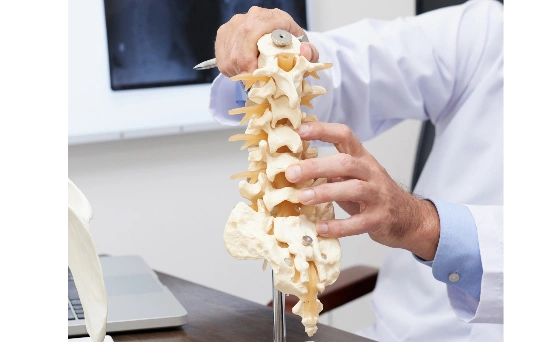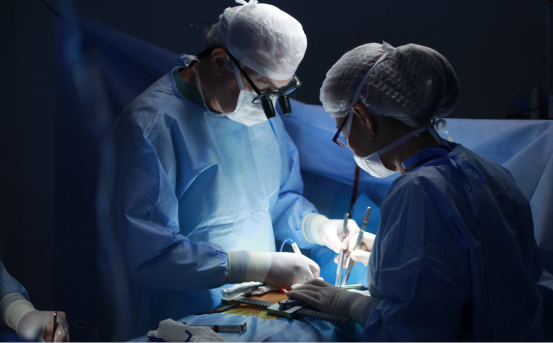Back pain is among the most frequent reasons that patients seek medical attention. When it becomes chronic and causes pain to the arms or legs due to herniated discs, the discectomy procedure might be suggested. Understanding what is discectomy surgery is essential for those suffering from back pain. What is discectomy exactly? Who should undergo it? What are the benefits and what is recovery?
Back pain is an extremely common health issue that affects millions of people worldwide, often impacting daily life, work, and overall quality of living. While most back pain resolves with rest, exercise, or conservative treatments, some cases especially those involving nerve compression can be far more serious. If you’re experiencing sharp pain radiating down your leg or arm, weakness in the limbs, or numbness caused by a herniated or slipped disc, you may be a candidate for what is discectomy surgery.
What is discectomy surgery
In this article, we will explore what is discectomy surgery, including its indications and benefits.
The procedure of discectomy is a surgical procedure that removes the herniated or damaged part of a disc within the spinal column that presses against the spinal nerve. The word “discectomy” is derived directly from “disc” (referring to disc in the spine) in addition to “ectopy” (meaning the removal).
Understanding what is discectomy surgery is essential for those suffering from back pain.
This is typically suggested when a herniated bulging disc is causing symptoms like:
-
Back pain that persists
-
A weakness or numbness in the legs or arms
-
Sciatica (pain radiating down the leg)
-
It is difficult to stand or walk because of nerve compression
Discectomy is a procedure that relieves the symptoms of compressing the nerve.
Why is Discectomy Surgery Done?
The spinal discs are soft gel-like cushions that are located between the vertebrae. They to absorb shock. If a disc gets injured (slips out of position or breaks) it could cause nerve pain to nearby nerves, which can cause the sensation of numbness, pain, or weakness.
Although conventional treatment options like medication, physical therapy and epidural injections are effective in many instances, a few sufferers are not able to find relief. In these cases, particularly when the symptoms hinder mobility or the quality of living surgical discectomy is suggested..
Types of Discectomy Surgery
There are a variety of discectomy procedures, based on the position of the disc as well as the method of surgery used.
Open Discectomy
This is the standard procedure which involves making a larger cut made at the back of the body to allow access to the spinal. Muscles are pulled back to expose vertebrae. the disc that is herniated is removed. It can be used in conjunction with the laminectomy (removal of a part of bone) to open up more space.
Microdiscectomy
It is a minimally-invasive variant where a tiny incision is made and tools for surgery (including the microscope) permit exact elimination of disc pieces. It leads to faster healing and less discomfort.
Endoscopic Discectomy
The endoscope is used (a thin flexible tube fitted with cameras) in order to direct the procedure through a small cut. It is among the most minimally invasive procedures and can be performed in an outpatient setting.
How to Prepare for Discectomy Surgery
Before you undergo surgery Your doctor will :-
-
Check your medical past and your current medications
-
We recommend an MRI or CT scan to find the herniated disc.
-
Recommend stopping certain medicines (like blood thinners)
-
We suggest fasting for a couple of hours prior to surgery.
-
Discuss alternatives to anesthesia discectomy is generally done under general anesthesia.
The Discectomy Procedure: What to Expect?
The process typically takes between 1 and 2 hours and includes three steps.
-
Anesthesia will be administered to make sure you’re asleep and completely pain-free.
-
A small incision is cut at the back of the spine level that is affected.
-
The muscles and tissues are cautiously removed to expose the spinal bones.
-
In the case of microdiscectomy or endoscopic discectomy the use of a microscope or an endoscope is introduced.
-
The herniated area of disc pressing against the nerve is taken out.
-
After decompression is completed after which the incision is closed using staples or stitches.
-
You are taken to a recuperation area and supervised as you get out of anesthesia.
Recovery After Discectomy Surgery
The time to recover can differ based on the kind of discectomy you have undergone and your general health. Here’s a list of what to expect :-
Hospital Stay
-
Endoscopic discectomy and microdiscectomy can be performed as day-care procedures which allows patients to return home the next day.
-
A traditional open discectomy could necessitate an one-day hospital stay.
Initial Recovery (First 2 Weeks)
-
A mild ache, swelling, or soreness around the site of incision
-
Medicines for pain relief are typically prescribed
-
Walking is recommended soon following surgery to help promote healing
-
Avoid twisting, lifting, or engaging in strenuous activities.
Return to Normal Activities
-
The majority of patients resume work within two to six weeks according to how physically demanding their work
-
Full recovery usually takes between 6 and 8 weeks
-
Physical therapy is a good option to build back muscles and increase flexibility.
Benefits of Discectomy Surgery
When it’s successful discectomy surgery is successful, it can provide a significant relief from pain as well as improved mobility. The main benefits are:
-
It is reduced or eliminated the sciatic nerve’s pain
-
Better function of the affected limb
-
A better living quality and returning to routine activities
-
The prevention of more invasive spinal procedures.
-
A high success rate, specifically when combined with microdiscectomy.
Risks and Complications of Discectomy Surgery
As with all surgeries discectomy, it is not without risk even though they’re uncommon :-
-
Infection at the point of incision or the spine
-
Bleeding
-
Nerve injury that causes the feeling of numbness or weakness
-
Herniation recurrence within the same disc or different disc
-
Spinal fluid leak
-
Anesthesia-related reactions
Following the instructions given by your surgeon after surgery will assist in helping reduce the risk.
Dissection as opposed to. Laminectomy What’s the difference?
Both procedures are usually done in tandem, but they serve different functions :-
-
Discectomy takes out the disc that has herniated pressing down on nerves
-
Laminectomy is the removal of a part of the vertebra, known as the lamina in order to relieve pressure and make space
In certain situations it is possible to do both in tandem to ensure optimal decompression.
When to See a Doctor After Surgery?
Consult your physician immediately If you notice :-
-
Chest or fever
-
Swelling, redness or a discharge from the site of the cut
-
Pain that persists or gets worse
-
Inability to control bladder or loss of bowel control
-
Legs weakness or numbness
Medical attention is prompt to ensure that any problems are dealt with promptly.
Conclusion
The procedure of discectomy is an reliable and safe procedure for patients suffering from disc herniation-related nerve pain that isn’t responding to treatment with a conservative approach. Because of the advances in techniques such as microdiscectomy as well as endoscopic discectomy, the process is more efficient and results are generally positive.























